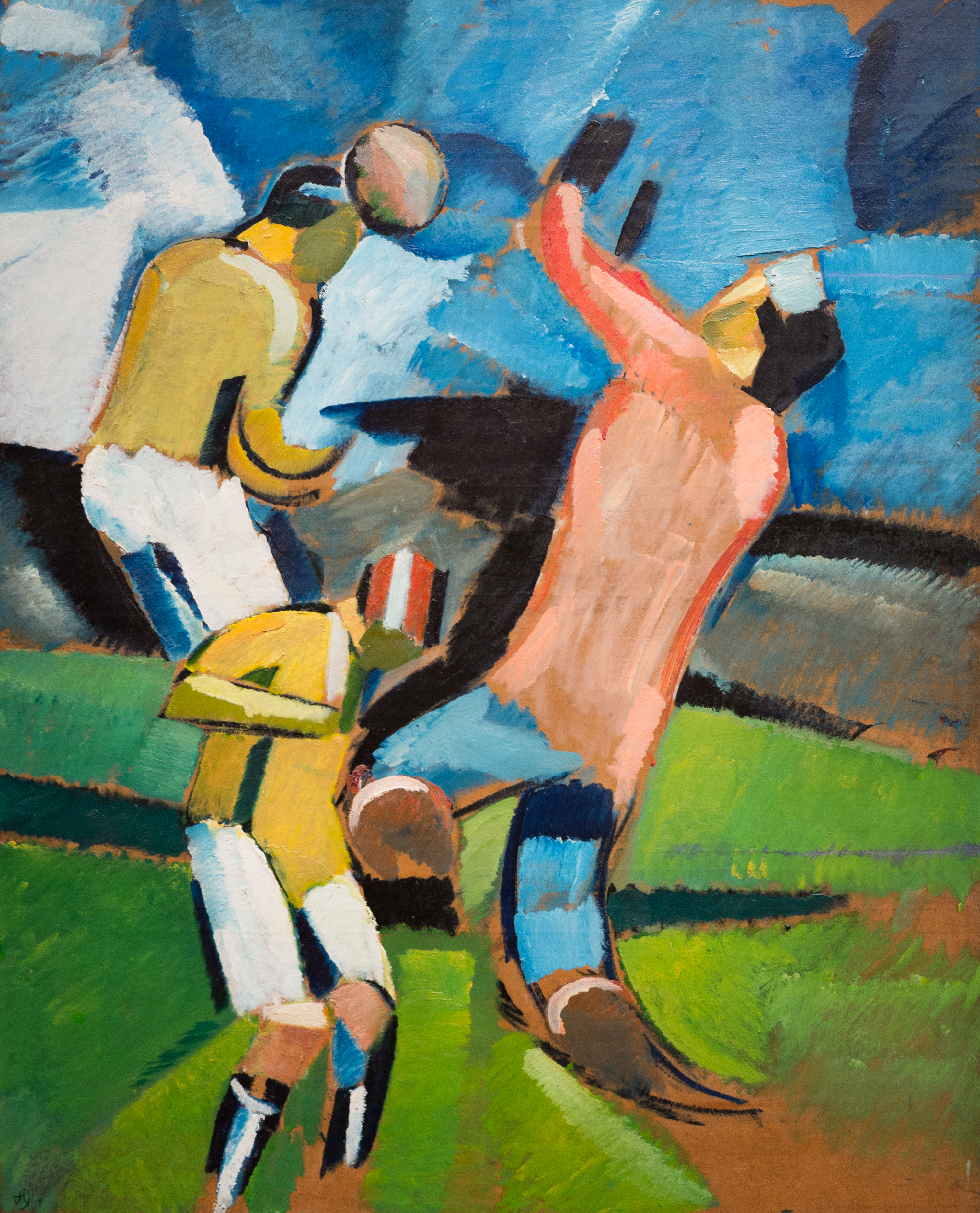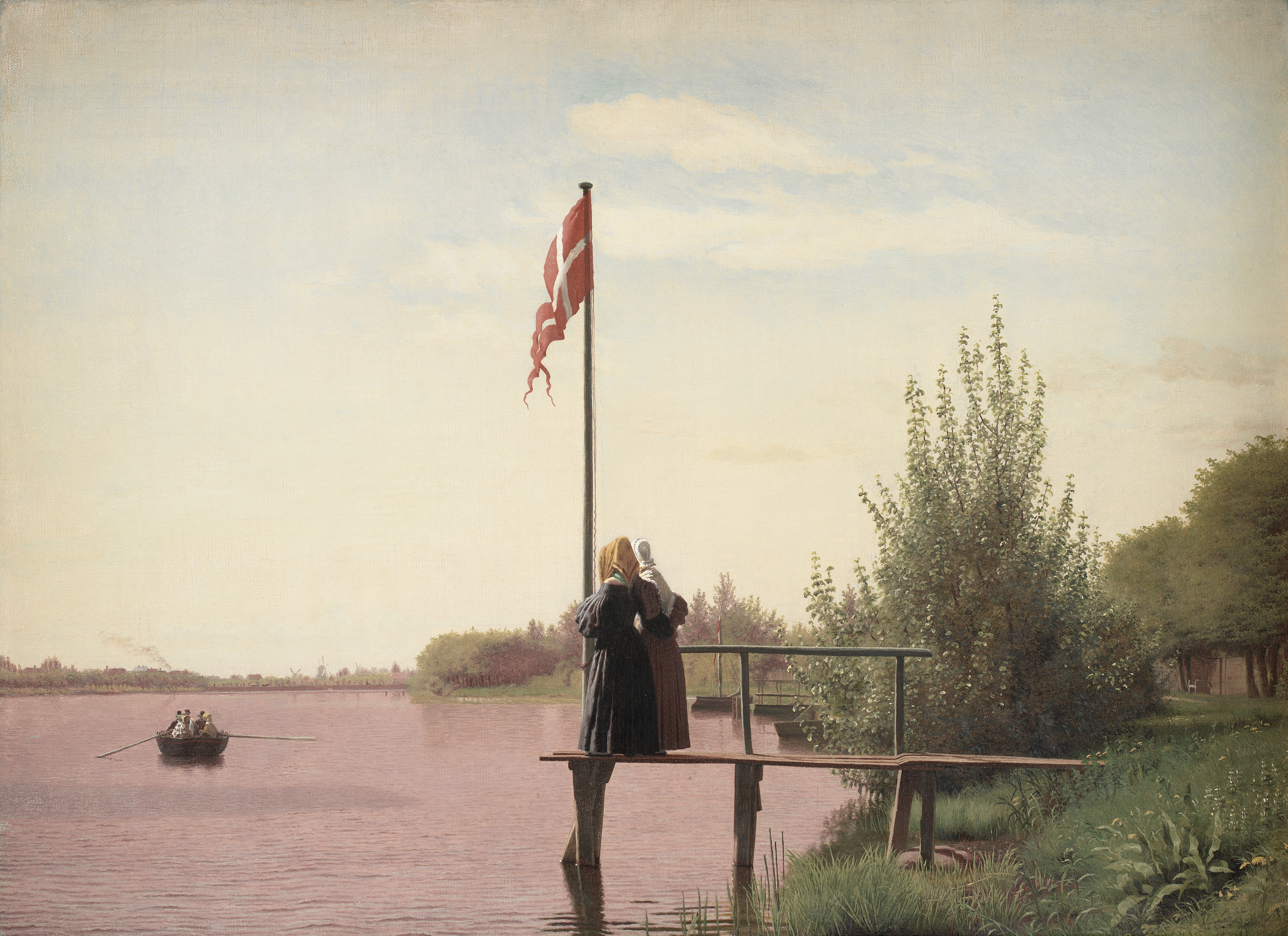|
Harald Giersing
Harald Giersing (24 April 1881 – 15 January 1927) was a Danish painter. He was instrumental in developing the classic modernism movement in Denmark around 1910-1920. He is remembered as one of Denmark's most important 20th-century artists both for his portraits and landscapes. Life and development Giersing, who died at the early age of 45, was driven by a desire to concentrate on change and beauty. Unable to find support in religion, he adopted modernism as an existential approach as to how art could fill the void for those without faith in God. While some synergies with the work of Vilhelm Lundstrøm can be detected, he differed from contemporaries such as Niels Larsen Stevns, Sigurd Swane and Edvard Weie in that he sought to represent images just as he had seen them, almost in the form of photographs. [...More Info...] [...Related Items...] OR: [Wikipedia] [Google] [Baidu] |
Copenhagen
Copenhagen ( or .; da, København ) is the capital and most populous city of Denmark, with a proper population of around 815.000 in the last quarter of 2022; and some 1.370,000 in the urban area; and the wider Copenhagen metropolitan area has 2,057,142 people. Copenhagen is on the islands of Zealand and Amager, separated from Malmö, Sweden, by the Øresund strait. The Øresund Bridge connects the two cities by rail and road. Originally a Viking fishing village established in the 10th century in the vicinity of what is now Gammel Strand, Copenhagen became the capital of Denmark in the early 15th century. Beginning in the 17th century, it consolidated its position as a regional centre of power with its institutions, defences, and armed forces. During the Renaissance the city served as the de facto capital of the Kalmar Union, being the seat of monarchy, governing the majority of the present day Nordic region in a personal union with Sweden and Norway ruled by the Danis ... [...More Info...] [...Related Items...] OR: [Wikipedia] [Google] [Baidu] |
Marquet
Marquet is an occupational surname of French origin, which means a woodworker in marquetry. The name may refer to: *Adrien Marquet (1884–1955), French politician *Albert Marquet (1875–1947), French painter * Andrée Marquet (born 1934), French organic chemist *Charles Marquet (1820–1900), French naturalist and entomologist *Claude Marquet (1869–1920), Australian cartoonist *Élisabeth Marquet (born 1960), French politician * François Marquet (born 1995), Belgian football player *Georges Marquet (1886–1947), Belgian businessman *Jaime Marquet (1710–1782), French architect * Josh Marquet (born 1969), Australian cricket player * Luc Marquet (born 1970), French volleyball player * Mathieu Marquet (born 1994), Mauritian swimmer * Maurice Marquet (born 1954), New Zealand field hockey player * Paul Marquet (born 1969), Australian rugby player * Sascha Marquet (born 1989), German football player Other uses *Marquet, a fictional continent in Exandria and the main setting of the ... [...More Info...] [...Related Items...] OR: [Wikipedia] [Google] [Baidu] |
1927 Deaths
Nineteen or 19 may refer to: * 19 (number), the natural number following 18 and preceding 20 * one of the years 19 BC, AD 19, 1919, 2019 Films * ''19'' (film), a 2001 Japanese film * ''Nineteen'' (film), a 1987 science fiction film Music * 19 (band), a Japanese pop music duo Albums * ''19'' (Adele album), 2008 * ''19'', a 2003 album by Alsou * ''19'', a 2006 album by Evan Yo * ''19'', a 2018 album by MHD * ''19'', one half of the double album ''63/19'' by Kool A.D. * ''Number Nineteen'', a 1971 album by American jazz pianist Mal Waldron * ''XIX'' (EP), a 2019 EP by 1the9 Songs * "19" (song), a 1985 song by British musician Paul Hardcastle. * "Nineteen", a song by Bad4Good from the 1992 album '' Refugee'' * "Nineteen", a song by Karma to Burn from the 2001 album ''Almost Heathen''. * "Nineteen" (song), a 2007 song by American singer Billy Ray Cyrus. * "Nineteen", a song by Tegan and Sara from the 2007 album '' The Con''. * "XIX" (song), a 2014 song by Slipk ... [...More Info...] [...Related Items...] OR: [Wikipedia] [Google] [Baidu] |
1881 Births
Events January–March * January 1– 24 – Siege of Geok Tepe: Russian troops under General Mikhail Skobelev defeat the Turkomans. * January 13 – War of the Pacific – Battle of San Juan and Chorrillos: The Chilean army defeats Peruvian forces. * January 15 – War of the Pacific – Battle of Miraflores: The Chileans take Lima, capital of Peru, after defeating its second line of defense in Miraflores. * January 24 – William Edward Forster, chief secretary for Ireland, introduces his Coercion Bill, which temporarily suspends habeas corpus so that those people suspected of committing an offence can be detained without trial; it goes through a long debate before it is accepted February 2. * January 25 – Thomas Edison and Alexander Graham Bell form the Oriental Telephone Company. * February 13 – The first issue of the feminist newspaper ''La Citoyenne'' is published by Hubertine Auclert. * February 16 – The Canad ... [...More Info...] [...Related Items...] OR: [Wikipedia] [Google] [Baidu] |
Art Of Denmark
Danish art is the visual arts produced in Denmark or by Danish artists. It goes back thousands of years with significant artifacts from the 2nd millennium BC, such as the Trundholm sun chariot. For many early periods, it is usually considered as part of the wider Nordic art of Scandinavia. Art from what is today Denmark forms part of the art of the Nordic Bronze Age, and then Norse art, Norse and Viking art. Danish medieval painting is almost entirely known from church frescos in Denmark, church frescos such as those from the 16th-century artist known as the Elmelunde Master. The Reformation greatly disrupted Danish artistic traditions, and left the existing body of painters and sculptors without large markets. The requirements of the court and aristocracy were mainly for portraits, usually by imported artists, and it was not until the 18th century that large numbers of Danes were trained in contemporary styles. For an extended period of time thereafter art in Denmark either ... [...More Info...] [...Related Items...] OR: [Wikipedia] [Google] [Baidu] |
Funen
Funen ( da, Fyn, ), with an area of , is the third-largest island of Denmark, after Zealand and Vendsyssel-Thy. It is the 165th-largest island in the world. It is located in the central part of the country and has a population of 469,947 as of 2020. Funen's main city is Odense, which is connected to the sea by a seldom-used canal. The city's shipyard, Odense Steel Shipyard, has been relocated outside Odense proper. Funen belongs administratively to the Region of Southern Denmark. From 1970 to 2006 the island formed the biggest part of Funen County, which also included the islands of Langeland, Ærø, Tåsinge, and a number of smaller islands. Funen is linked to Zealand, Denmark's largest island, by the Great Belt Bridge, which carries both trains and cars. The bridge is in reality three bridges; low road and rail bridges connect Funen to the small island of Sprogø in the middle of the Great Belt, and a long road suspension bridge (the second longest in the world at the time ... [...More Info...] [...Related Items...] OR: [Wikipedia] [Google] [Baidu] |
Fritz Syberg
Christian Friedrich Wilhelm Heinrich Syberg, generally known as Fritz Syberg, (28 July 1862, Fåborg – 20 December 1939, Kerteminde) was a Danish painter and illustrator, one of the or Funen Painters (''Fynboerne'') living and working on the island of Funen. Biography Syberg, from a poor background in Fåborg, first served a house painter's apprenticeship under Syrak Hansen, the father of fellow artist Peter Hansen before attending the Copenhagen Technical School in 1882 where Holger Grønvold taught him drawing. After a short period at the Danish Academy (spring 1884), he attended the Kunstnernes Frie Studieskoler (1885–1891) where he was the first of the Fynboerne to study under Kristian Zahrtmann. His travels included Sweden (1899) where he visited Johannes Larsen, Germany (1902), Italy (1905) together with Jens Birkholm, the Netherlands and Paris (1908) and Pisa (1910–1913). Syberg married Syrak Hansen's daughter Anna in 1894 and, after her death in 1914, he married ... [...More Info...] [...Related Items...] OR: [Wikipedia] [Google] [Baidu] |
Besse Syberg
Besse may refer to: Places * Besse, Cantal, France * Besse, Dordogne, France * Besse, Isère, France * Besse-et-Saint-Anastaise, Puy-de-Dôme, France ** Super-Besse, a ski resort * Besse-sur-Issole, Var, France * Bessé, Charente, France * Bèssè, Benin *Besse, in Koko/Besse Local Government Area, Kebbi State, Nigeria People * Bernard of Besse (13th century) French Friar Minor and chronicler * Besse Cooper (1896–2012), American suffragette and supercentenarian * Besse Day (1889–1986), American statistician * Bessé´, fossilised woman (~70,000 years old) at Sulawesi, Indonesia * Georges Besse (1927–1986), French businessman * Joseph Besse (1683—1757), English writer, author of ''Quaker Sufferings'' See also * Bess (other) * Bess (name) * Bese (other) * Bessey (surname) Bessey is a surname. Notable people with the surname include: * Charles A. Bessey (1848–1909), American soldier and Medal of Honor recipient *Charles Edwin Bessey (1845–1915), Americ ... [...More Info...] [...Related Items...] OR: [Wikipedia] [Google] [Baidu] |
Cubism
Cubism is an early-20th-century avant-garde art movement that revolutionized European painting and sculpture, and inspired related movements in music, literature and architecture. In Cubist artwork, objects are analyzed, broken up and reassembled in an abstracted form—instead of depicting objects from a single viewpoint, the artist depicts the subject from a multitude of viewpoints to represent the subject in a greater context. Cubism has been considered the most influential art movement of the 20th century. The term is broadly used in association with a wide variety of art produced in Paris (Montmartre and Montparnasse) or near Paris ( Puteaux) during the 1910s and throughout the 1920s. The movement was pioneered by Pablo Picasso and Georges Braque, and joined by Jean Metzinger, Albert Gleizes, Robert Delaunay, Henri Le Fauconnier, Juan Gris, and Fernand Léger. One primary influence that led to Cubism was the representation of three-dimensional form in the late works of Pau ... [...More Info...] [...Related Items...] OR: [Wikipedia] [Google] [Baidu] |
Grønningen
Grønningen is a Danish artists cooperative whose members arrange exhibitions and similar events. Founded in 1915, it is one of the oldest and most important groupings of its kind in Denmark and currently has 54 members. It is named after the street Grønningen in Copenhagen where the first art exhibition was held. Initially, it brought together artists interested in radical and experimental art who had been members of Den Frie Udstilling ("The Free Exhibition"). Most prominent in the early years were artists such as Harald Giersing, Sigurd Swane, Olaf Rude, William Scharff, Fritz Syberg and Johannes Larsen. They were soon joined by Vilhelm Lundstrøm, Svend Johansen, Axel Salto, Jens Søndergaard, Niels Lergaard, Erik Hoppe, Christine Swane, Astrid Noack and Gottfred Eickhoff. Later came Erik Werner, Eiler Krag, Ib Spang Olsen, Lars Bo and Bo Bojesen. During the 1940s, abstract art was introduced by Richard Mortensen and Egill Jacobsen. The annual exhibitions are now held ... [...More Info...] [...Related Items...] OR: [Wikipedia] [Google] [Baidu] |




